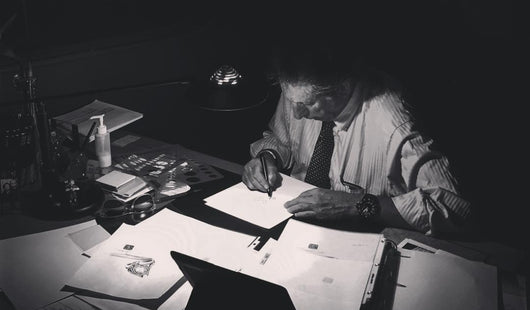
Glossary: Simulated Diamond
Simulated Diamond
Simulated diamonds look very similar to natural diamonds, but lack the same physical, chemical and optical properties. Common diamond simulants include moissanite, an affordable, durable simulant made from crystal carbide and cubic zirconia (CZ), a material made from a crystallized form of zirconium oxide.
What Is a Simulated Diamond?
Both lab-grown gems and natural gems that look similar to a particular gemstone can be used as imitations. Gemologists refer to each of these imitations as “simulants.” Natural materials, such as colorless topaz, beryl, quartz, sapphire and especially zircon, have been used in jewelry as diamond simulants for centuries.
Many of today’s most common diamond simulants, such as moissanite and cubic zirconia, are synthetic stones made in laboratories. Cubic zirconia, for instance, is made by melting zirconium oxide powder with stabilizers like magnesium and calcium at nearly 5,000º F. As the melted combination cools, crystals form, creating a product that can ultimately be cut and polished to resemble certain diamond shapes, such as cushion and oval cut diamonds.
Are Lab-grown Diamonds Simulated Diamonds?
Diamond simulants are not the same as lab-grown diamonds, which have the same physical, chemical and optical properties as natural diamonds. A synthetic, lab-developed material, such as cubic zirconia, is designed to look similar to a natural diamond. Also manmade in dedicated facilities, lab-grown diamonds are made to be identical to natural diamonds in every possible way. While they can sometimes seem similar from a distance, these gems are very different.
While it shares a few of the same qualities as natural diamonds, CZ is different in several key ways. For one, it contains no carbon diamond bonds, which makes it chemically, physically and optically different from both natural diamonds and lab-grown diamonds.
Lab diamonds, on the other hand, are pure crystallized carbon, which makes them chemically, physically and optically identical to natural diamonds. On the 10-point Mohs Hardness Scale, CZ ranks 8 to 8.5, while a lab-grown diamond, by comparison, is a perfect 10.
Lab diamonds and cubic zirconia also differ significantly in beauty, quality and value. From a value perspective, CZ is worth very little. If you were to try and resell a simulated diamond cubic zirconia ring, you would be able to retain some value for the setting. Unfortunately, the actual CZ gemstone would carry zero market value. This is reflected in the low cost of CZ, which can be around one one-hundredth the cost of a lab-grown diamond.
Pros and Cons of Simulated Diamonds
There aren’t many advantages to simulated diamonds other than cost. Every simulant has distinctive properties, so it is difficult to compare them to diamonds as a whole. Overall, however, diamonds are harder than any simulant. This means that both natural and lab-grown diamonds will hold up to daily wear, while stimulants are much more likely to develop visible scratches and abrasions, especially near the facet junctions. Also, due to their superior hardness, real diamonds can take a better polish than simulated stones and other natural gemstones. This means a real diamond will have a superior luster than a simulated gem.
How to Spot a Simulated Diamond
Unlike natural diamonds and lab-grown diamonds, which can both have varying degrees of color, simulated CZ is more likely to be colorless, which is often a tell-tale sign it isn’t an actual diamond. Lab-grown diamonds will also have microscopic inclusions which indicate that they are real.
CZ also tends to have inferior refractive qualities compared to both natural and lab-grown diamonds, which have spectacular fire, brilliance and sparkle due to the all-important 4Cs (cut, color, clarity and carat weight).
Unfortunately, many people are convinced (or even tricked) into settling for a simulated diamond instead of a real one. Regardless of what you are told, it’s very difficult to fool friends, co-workers and family members that a simulated diamond is the real thing. This often leads to angry or humiliated brides, girlfriends and wives, who are shocked to find out that their diamond jewelry is actually a cheap, simulated synthetic design.
Despite what anyone says, nothing compares to an actual diamond gemstone. The clarity, the cut, the scintillating fire. It all combines to create a mesmerizing jewelry piece that demands attention for all the right reasons (and none of the wrong ones). And when a top-quality diamond is paired with a stunning John Atencio setting, it results in a breathtaking artistic expression of luxury and beauty unlike anything else.
Make an appointment at one of John’s many convenient locations, where our team will provide a personalized approach to help you find a gorgeous diamond jewelry piece for yourself or that special someone.

